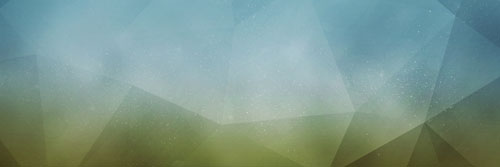IoT-based Water Quality Control in Tilapia Aquaculture Using Fuzzy Logic
Abstract
Full Text:
PDF (57-64)References
N. Mashaii et al., “Reproductive Biology of Nile Tilapia, Oreochromis niloticus under the Brackish Water Culture Condition,” International Journal of Food Science and Agriculture, vol. 6, no. 1, pp. 4–7, Jan. 2022, doi: 10.26855/ijfsa.2022.03.002.
A. W. S. Martins et al., “Exposure to salinity induces oxidative damage and changes in the expression of genes related to appetite regulation in Nile tilapia (Oreochromis niloticus),” Front Genet, vol. 13, Sep. 2022, doi: 10.3389/fgene.2022.948228.
Y. Chang, J. Xu, and Z. Ghafoor, “AN IOT AND BLOCKCHAIN APPROACH FOR THE SMART WATER MANAGEMENT SYSTEM IN AGRICULTURE,” vol. 22, no. 2, pp. 105–116, 2021, doi: 10.12694:/scpe.v22i2.1869.
M. M. Islam, M. A. Kashem, and J. Uddin, “An internet of things framework for real-time aquatic environment monitoring using an Arduino and sensors,” International Journal of Electrical and Computer Engineering, vol. 12, no. 1, pp. 826–833, Feb. 2022, doi: 10.11591/ijece.v12i1.pp826-833.
F. Lezzar, D. Benmerzoug, and I. Kitouni, “IoT for monitoring and control of water quality parameters,” International Journal of Interactive Mobile Technologies, vol. 14, no. 16, pp. 4–19, 2020, doi: 10.3991/ijim.v14i16.15783.
S. Kambalimath and P. C. Deka, “A basic review of fuzzy logic applications in hydrology and water resources,” Applied Water Science, vol. 10, no. 8. Springer Science and Business Media Deutschland GmbH, Aug. 01, 2020. doi: 10.1007/s13201-020-01276-2.
L. Liu and H. Deng, “A fuzzy approach for ranking discrete multi-attribute alternatives under uncertainty,” Mathematics, vol. 8, no. 6, Jun. 2020, doi: 10.3390/MATH8060945.
L. K. Tolentino et al., “IoT-based automated water monitoring and correcting modular device via LoRaWAN for aquaculture,” International Journal of Computing and Digital Systems, vol. 10, no. 1, pp. 533–544, 2021, doi: 10.12785/IJCDS/100151.
G. You et al., “Evaluation of aquaculture water quality based on improved fuzzy comprehensive evaluation method,” Water (Switzerland), vol. 13, no. 8, Apr. 2021, doi: 10.3390/w13081019.
C. H. Chen, Y. C. Wu, J. X. Zhang, and Y. H. Chen, “IoT-Based Fish Farm Water Quality Monitoring System,” Sensors, vol. 22, no. 17, Sep. 2022, doi: 10.3390/s22176700.
E. Syrmos et al., “An Intelligent Modular Water Monitoring IoT System for Real-Time Quantitative and Qualitative Measurements,” Sustainability (Switzerland), vol. 15, no. 3, Feb. 2023, doi: 10.3390/su15032127.
M. Lowe, R. Qin, and X. Mao, “A Review on Machine Learning, Artificial Intelligence, and Smart Technology in Water Treatment and Monitoring,” Water (Switzerland), vol. 14, no. 9, May 2022, doi: 10.3390/w14091384.
F. Jan, N. Min-Allah, and D. Düştegör, “Iot based smart water quality monitoring: Recent techniques, trends and challenges for domestic applications,” Water (Switzerland), vol. 13, no. 13. MDPI AG, Jul. 01, 2021. doi: 10.3390/w13131729.
W. M. Sanya, M. A. Alawi, and I. Eugenio, “Design and development of Smart Water Quality Monitoring System Using IoT,” International Journal of Advances in Scientific Research and Engineering, vol. 08, no. 03, pp. 01–13, 2022, doi: 10.31695/ijasre.2022.8.3.1.
O. O. Olanubi, T. T. Akano, and O. S. Asaolu, “Design and development of an IoT-based intelligent water quality management system for aquaculture,” Journal of Electrical Systems and Information Technology, vol. 11, no. 1, Mar. 2024, doi: 10.1186/s43067-024-00139-z.
Refbacks
- There are currently no refbacks.
